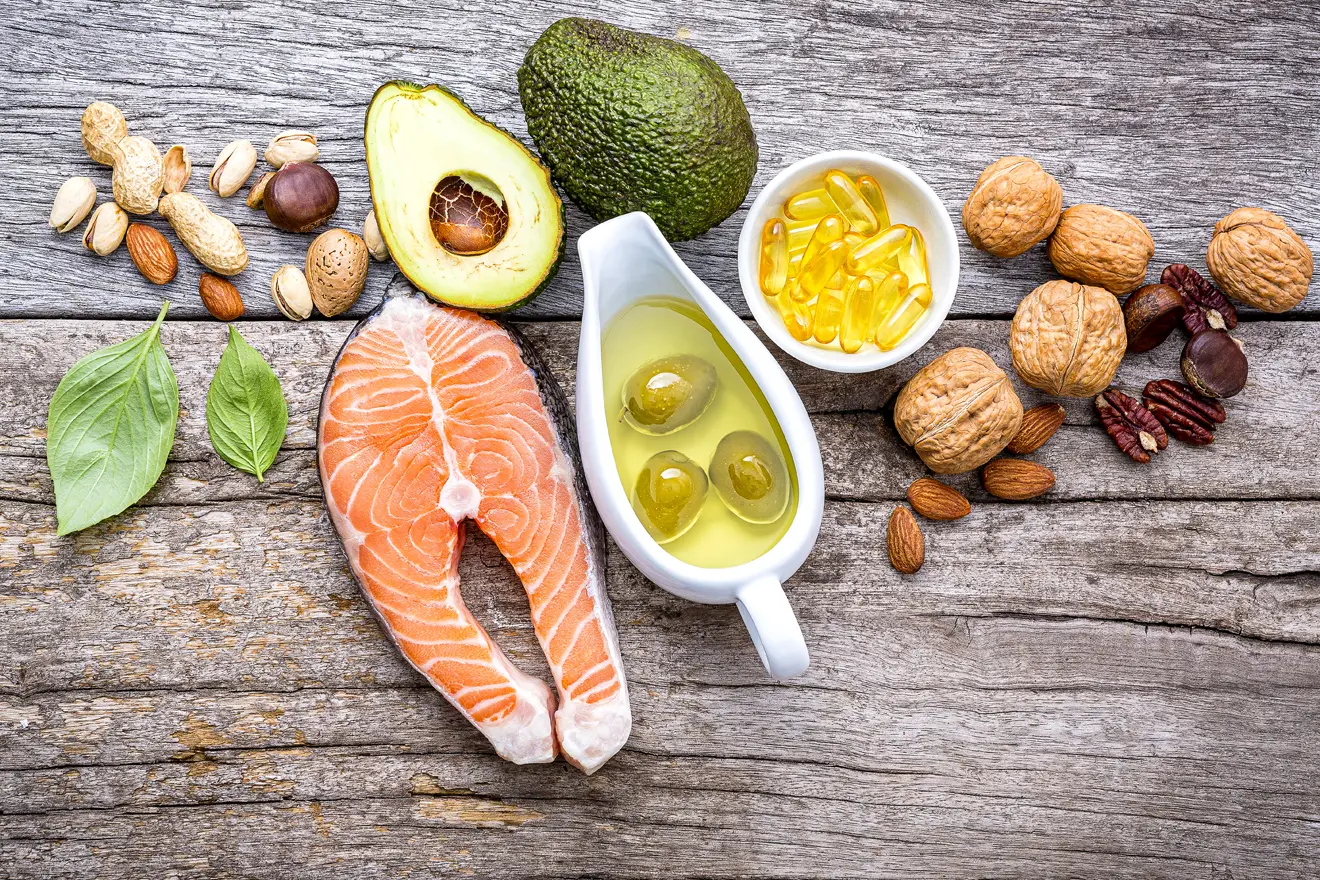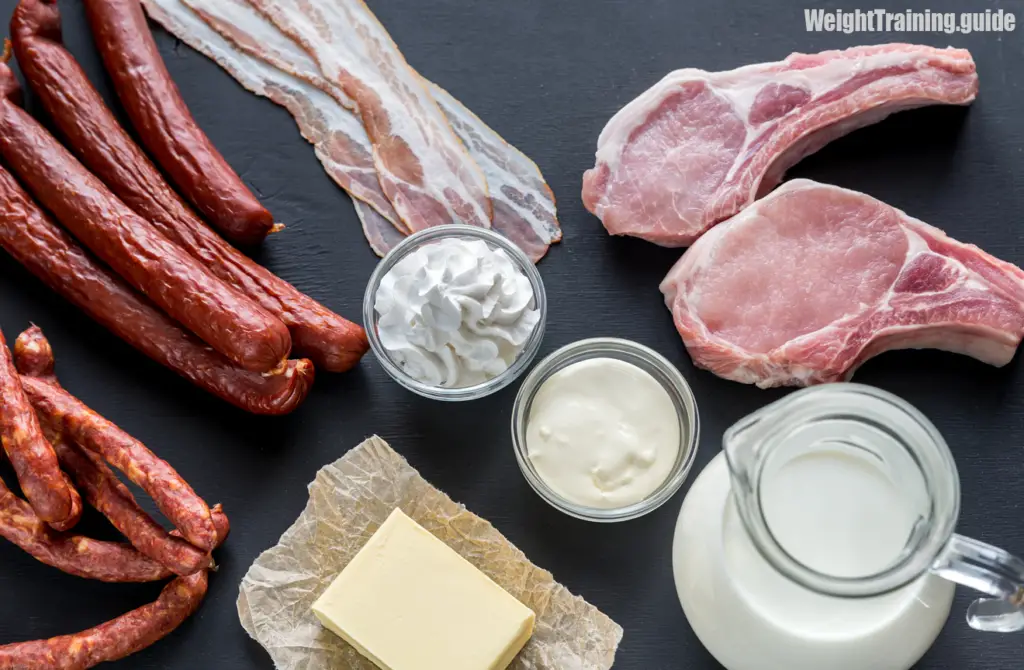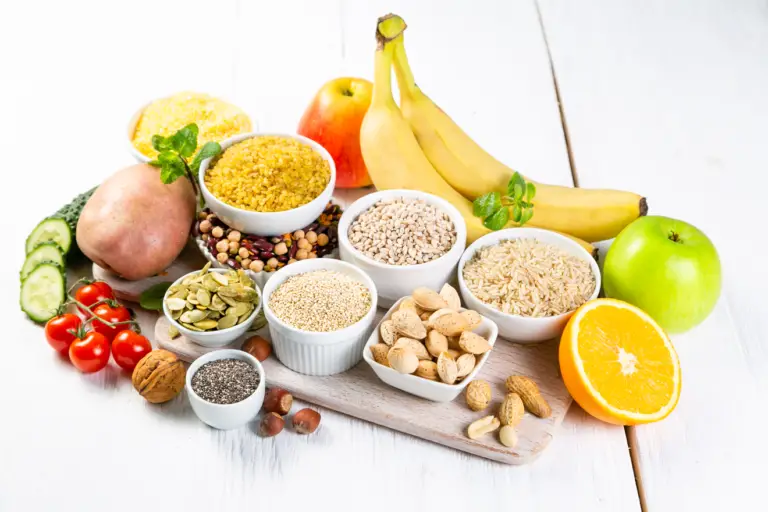Dietary fat
Why is dietary fat important for weight training?
Fat is an essential part of your diet. It provides an important source of fuel, helps your body to absorb fat-soluble vitamins (A, D, E, and K), cushions your organs, insulates your body, and is used to build the cell membrane of every cell in your body. In the context of weight training, fat plays a vital role in the manufacture of testosterone, which is important for promoting muscle growth. Fat may also help to increase levels of insulin-like growth factor 1 (IGF-1), another key hormone that stimulates growth in muscle mass and strength.
Different types of dietary fat
There are two main types of dietary fat:
- Unsaturated
- Saturated
All foods that contain fat will provide a mixture of both unsaturated and saturated fats. However, unsaturated fats occur in higher amounts in plant products, whereas saturated fats occur in higher quantities in animal products.
Unsaturated fats
Unsaturated fats are liquid at room temperature. They can be broken down into three groups:
- Monounsaturated fats
- Polyunsaturated fats
- Trans fats
Monounsaturated fats
Monounsaturated fats are considered healthy when eaten in moderation. They can lower your risk of heart disease and stroke by reducing the level of ‘bad’ cholesterol in your blood. They also help to develop and maintain your body’s cells. Monounsaturated fats can be found in avocados, peanut oil, olive oil, canola oil, almonds, peanuts, hazelnuts, pecans, cashews, pumpkin seeds, and sesame seeds.
Polyunsaturated fats
Like monounsaturated fats, polyunsaturated fats are considered healthy when consumed in moderation. They, too, help to lower the level of bad cholesterol in your blood and are required to develop and maintain your body’s cells. Polyunsaturated fats can be found in fish, fish oil, safflower oil, soybean oil, corn oil, canola oil, flaxseed oil, flaxseeds, and walnuts.
Two types of polyunsaturated fat, known as alpha-linoleic acid and linoleic acid, are very important because they cannot be made by the body and must therefore come from the diet. Alpha-linoleic acid is an omega-3 fatty acid and is used to make other omega-3 fatty acids (Figure 1); linoleic acid is an omega-6 fatty acid and is used to make other omega-6 fatty acids.
Figure 1. Sources of omega-3 fatty acids.
Omega-3 fatty acids are important for proper function of your nervous system, including your brain. Omega-3s also help to regulate hormones, ease inflammation, and reduce the risk of cardiovascular disease and stroke. In the context of weight training and exercise, omega-3 fatty acids increase the delivery of oxygen to muscles, improve aerobic capacity and endurance, speed up recovery, and reduce joint stiffness. Foods high in alpha-linoleic acid include fish (salmon, mackerel, and tuna), vegetable oils, nuts (especially walnuts), flaxseeds, flaxseed oil, and leafy vegetables.
As with omega-3 fatty acids, omega-6 fatty acids play a crucial role in the function of your nervous system. They also help to stimulate the growth of skin and hair, maintain the health of your bones, regulate your metabolism, and maintain your reproductive system. Foods high in omega-6 fatty acids include nuts, seeds, and plant oils, such as corn oil, soybean oil, and sunflower oil.
A healthy diet would contain a balance of omega-3 and omega-6 fatty acids. One of the reasons is that omega-3 fatty acids help to reduce inflammation, whereas some omega-6 fatty acids tend to promote inflammation. The problem is that omega-6 fatty acids are more widely found in modern foods than are omega-3 fatty acids. The typical American tends to consume 14 to 25 times more omega-6 than omega-3! Consuming an excessive amount of omega-6 relative to omega-3 for a prolonged period, as many people do in the developed world, is believed by some to be a contributory factor to the prevalence of chronic inflammation, cancer, neurodegenerative disease, heart attack, stroke, and many of the other common health problems in the developed world.
Trans fats
Trans fats are considered very unhealthy and should be avoided. They are known to raise bad cholesterol levels and decrease good cholesterol levels (a combination that increases your risk of heart disease and stroke) even more than do saturated fats. Trans fats have also been associated with insulin resistance and inflammation.
Trans fats can be naturally occurring or artificial. Naturally occurring trans fats are produced in the gut of some animals and can therefore be found in certain meats and dairy products. However, the quantity is small. Most of the trans fats in your diet come from artificial sources.
Artificial trans fats are made by adding hydrogen to liquid vegetable oils in an industrial process called hydrogenation, which makes the oil more solid and stable. This partially hydrogenated oil, as it is known, is less likely to spoil, so foods made with it have a longer shelf life. Partially hydrogenated oil is also used by some restaurants for deep frying because the oil can withstand repeated heating without breaking down and therefore doesn’t have to be changed as often as do other types of oil.
As a result of these ‘benefits’, partially hydrogenated oils became popular in restaurants and the food industry, being used for frying and in the making of baked goods, processed snacks, and margarine. You are therefore most likely to find trans fats in processed or deep-fried foods, such as margarine, imitation cheese, cakes, cookies, doughnuts, crackers, and chips. Fortunately, trans fats are gradually being eliminated from many of these foods.
Food labels in the US are allowed to state that a food contains no trans fat if the amount is less than 0.5 grams. If you consume several servings of these foods, the hidden trans fat content can quickly add up. Therefore, in addition to the food label, you should check the ingredients for ‘partially hydrogenated vegetable oil’, which will indicate whether the food contains some trans fat even if the amount is less than 0.5 grams.
Saturated fat
Saturated fats (Figure 2) are solid at room temperature. They are mainly found in animal foods, such as red meat, whole milk, cheese, ice cream, yogurt, chocolate, butter, lard, seafood, and eggs (in the yolk). They also occur in some plant-based foods, such as coconut, coconut oil, palm oil, and palm kernel oil.
Figure 2. Sources of saturated fat.
In the past, saturated fats were considered unhealthy because they were linked to an increase in bad cholesterol, which increases the risk of heart disease and stroke. However, that idea has started to change since certain studies have found a lack of evidence. Even so, the message remains that cutting back on saturated fats can be good for health, especially if replaced with monounsaturated fats.
How much fat do you need per day?
The Dietary Guidelines for Americans, 2020–2025, published by the US Department of Health and Human Services and the US Department of Agriculture (USDA), recommends that 20 percent to 35 percent of the daily kilocalories consumed by men and women aged 19 and over should come from fat. Just make sure that you:
- Favor foods that are high in unsaturated fat
- Limit foods that are high in saturated fat
- Completely avoid foods that contain trans fat (which may be listed in the food’s ingredients as ‘partially hydrogenated vegetable oil’)
- Get an equal and sufficient amount of omega-3 and omega-6









